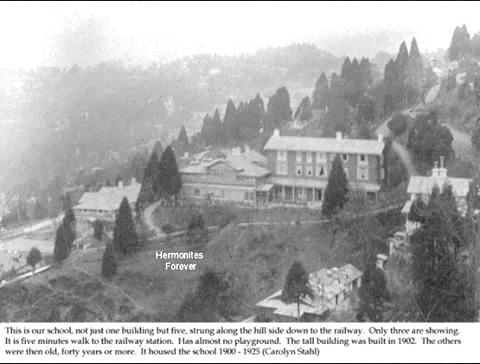COME WHAT MAY, I'M READY!
The final hearing of my house demolition case which has entered the 19th year will come up in the Sikkim High Court on July 19, 2016. I have been fair, patient and law-abiding for nearly two decades. I am ready for talks but there will be no compromise on the basic issues of Sikkim and the Sikkimese.
I am innocent and the gist of the case, placed below, has already been placed before the authorities, including the High Court and the Sikkim Chief Minister:
GIST OF JIGME N. KAZI’S OBSERVER BUILDING, NAM NANG SITE CASE
Jigme N. Kazi’s Observer Building site dispute at Nam Nang, Gangtok, which began in 1998, has been going on for 18 years. The case has been built on an allegation against Jigme N. Kazi levelled by Urban Development and Housing Department (UD&HD) and upheld by Buildings & Housing Department (B&HD) and various authorities, including courts. A section of the encroached portion of the building was demolished by the Sikkim Government on March 23, 24, 2015.
The gist of the case is as follows:
1. In 1996 a site measuring 1089 sq. ft. was allotted to Jigme N. Kazi’s Hill Media Publications, publishers of Sikkim Observer, an independent English weekly established in 1986.
2. Due to various reasons Kazi encroached some portion of the land/space on all four sides of his building. The space – and not land – encroached on first and second storeys of the building is around 1,400 to 1,600 sq. ft. On the ground floor the encroached area is less than 300 sq. ft.
3. On 20.12.2000 UD&HD alleged that Kazi had encroached 1,628 sq. ft. of land at the back side of the building which was to be used for Chintan Bhawan’s banquet-cum-conference hall. (Annexure – I)
4. In his letter to the East District Collector, dated 05.04.2001, Principal Chief Engineer-cum-Secretary, B&HD, alleged Kazi had encroached an area of land measuring 1,628 sq. ft. “at the back side his building which falls under the Assembly complex.” (Annexure – II)
5. In his show cause notice to Kazi, dated 07.06.2001, Principal Chief Engineer-cum-Secretary, B&HD, alleged: “...you have encroached upon an area measuring 1628 sft. of land beside the allotted site.” (Annexure – III)
6. While sketch map on site encroachment provided by UD&HD and accepted by B&HD show that area encroached is on all four sides of the building, the two departments alleged that the encroached area (1,628 sq. ft.) of land falls at the back side of the building. UD&HD map shows that the encroached area at the back side of the building and outside the retaining wall and boundary fencing of Chintan Bhawan is only 834.75 sq. ft. and not 1,628 sq. ft. as alleged. (Annexure – IV)
7. The contradictory and misleading information provided by UD&HD and B&HD and upheld by the courts is false, baseless and mischievous.
8. When the case came up in East DC court (Prescribed Authority) in 2005 Kazi asked for re-inspection of the site to show the encroached portion. The Commission formed by the DC undertook a joint inspection of the site. The report of the Commission pointed out that an area of 1,449 sq. ft. and not 1, 628 sq. ft., had been encroached on all four sides. However, DC’s order did not take note of the Commission’s report and ordered for demolition of the encroached area. Commission’s report and sketch map is annexed as Annexure – V.
9. In 2003 Kazi’s Review Petition in the Sikkim High Court pointed out that only 834.75 sq. ft. and not 1,628 sq. ft. had been encroached at the back side of the building. But the court failed to take note of this plea and upheld its order of 2003 that the area measuring 1,628 sq. ft. of land at the back side of the building should be vacated and handed over to government for construction of banquet hall. Such a huge area of land at the back side of Kazi’s building is non-existent.
10. Though the same facts of the actual area of encroachment was presented to the Law Department’s Appellate Authority it did not take note of them and upheld the earlier orders of the courts and dismissed the petition in June 2014. Kazi came to know of the order only on March 6, 2015.
11. When the encroached portion of the building was demolished on March 23, 24, 2015 the authorities failed to find 1,628 sq. ft. of encroached land at the back side of Kazi’s building. Sketch maps and photographs show areas demolished on all three sides of the building. (Annexure – VI)
12. The Sikkim High Court, while staying further demolition of the building, called for all records of the disputed site. The records show that Kazi had not encroached 1,628 sq. ft. of land at the back side of the building. The encroached area of a few feet wide which is on all sides of the building is of no use to the government. As per law the encroached portion may be regularised as done in similar cases.
13. There have been many judgements in the case but justice has been denied.
The final hearing of my house demolition case which has entered the 19th year will come up in the Sikkim High Court on July 19, 2016. I have been fair, patient and law-abiding for nearly two decades. I am ready for talks but there will be no compromise on the basic issues of Sikkim and the Sikkimese.
I am innocent and the gist of the case, placed below, has already been placed before the authorities, including the High Court and the Sikkim Chief Minister:
GIST OF JIGME N. KAZI’S OBSERVER BUILDING, NAM NANG SITE CASE
Jigme N. Kazi’s Observer Building site dispute at Nam Nang, Gangtok, which began in 1998, has been going on for 18 years. The case has been built on an allegation against Jigme N. Kazi levelled by Urban Development and Housing Department (UD&HD) and upheld by Buildings & Housing Department (B&HD) and various authorities, including courts. A section of the encroached portion of the building was demolished by the Sikkim Government on March 23, 24, 2015.
The gist of the case is as follows:
1. In 1996 a site measuring 1089 sq. ft. was allotted to Jigme N. Kazi’s Hill Media Publications, publishers of Sikkim Observer, an independent English weekly established in 1986.
2. Due to various reasons Kazi encroached some portion of the land/space on all four sides of his building. The space – and not land – encroached on first and second storeys of the building is around 1,400 to 1,600 sq. ft. On the ground floor the encroached area is less than 300 sq. ft.
3. On 20.12.2000 UD&HD alleged that Kazi had encroached 1,628 sq. ft. of land at the back side of the building which was to be used for Chintan Bhawan’s banquet-cum-conference hall. (Annexure – I)
4. In his letter to the East District Collector, dated 05.04.2001, Principal Chief Engineer-cum-Secretary, B&HD, alleged Kazi had encroached an area of land measuring 1,628 sq. ft. “at the back side his building which falls under the Assembly complex.” (Annexure – II)
5. In his show cause notice to Kazi, dated 07.06.2001, Principal Chief Engineer-cum-Secretary, B&HD, alleged: “...you have encroached upon an area measuring 1628 sft. of land beside the allotted site.” (Annexure – III)
6. While sketch map on site encroachment provided by UD&HD and accepted by B&HD show that area encroached is on all four sides of the building, the two departments alleged that the encroached area (1,628 sq. ft.) of land falls at the back side of the building. UD&HD map shows that the encroached area at the back side of the building and outside the retaining wall and boundary fencing of Chintan Bhawan is only 834.75 sq. ft. and not 1,628 sq. ft. as alleged. (Annexure – IV)
7. The contradictory and misleading information provided by UD&HD and B&HD and upheld by the courts is false, baseless and mischievous.
8. When the case came up in East DC court (Prescribed Authority) in 2005 Kazi asked for re-inspection of the site to show the encroached portion. The Commission formed by the DC undertook a joint inspection of the site. The report of the Commission pointed out that an area of 1,449 sq. ft. and not 1, 628 sq. ft., had been encroached on all four sides. However, DC’s order did not take note of the Commission’s report and ordered for demolition of the encroached area. Commission’s report and sketch map is annexed as Annexure – V.
9. In 2003 Kazi’s Review Petition in the Sikkim High Court pointed out that only 834.75 sq. ft. and not 1,628 sq. ft. had been encroached at the back side of the building. But the court failed to take note of this plea and upheld its order of 2003 that the area measuring 1,628 sq. ft. of land at the back side of the building should be vacated and handed over to government for construction of banquet hall. Such a huge area of land at the back side of Kazi’s building is non-existent.
10. Though the same facts of the actual area of encroachment was presented to the Law Department’s Appellate Authority it did not take note of them and upheld the earlier orders of the courts and dismissed the petition in June 2014. Kazi came to know of the order only on March 6, 2015.
11. When the encroached portion of the building was demolished on March 23, 24, 2015 the authorities failed to find 1,628 sq. ft. of encroached land at the back side of Kazi’s building. Sketch maps and photographs show areas demolished on all three sides of the building. (Annexure – VI)
12. The Sikkim High Court, while staying further demolition of the building, called for all records of the disputed site. The records show that Kazi had not encroached 1,628 sq. ft. of land at the back side of the building. The encroached area of a few feet wide which is on all sides of the building is of no use to the government. As per law the encroached portion may be regularised as done in similar cases.
13. There have been many judgements in the case but justice has been denied.


































